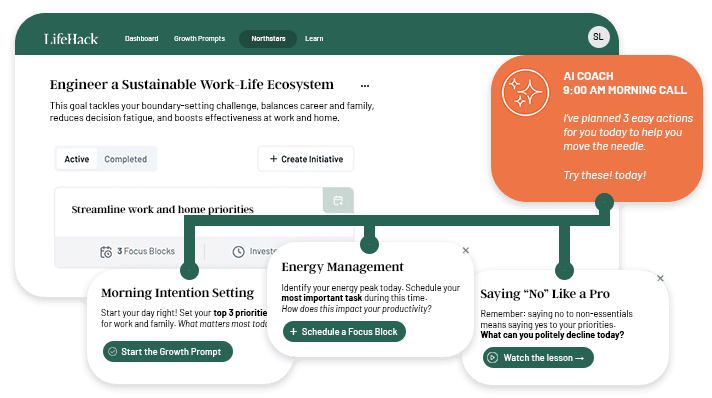Who doesn’t want to make their own hours, decide what work to take on, and determine their own pay?
The idea of ‘being your own boss’ is attractive, so why don’t more people take the leap and go freelance? Because it’s scary. As a freelancer, you’re essentially running your own small business—you’re responsible for finding clients, convincing them to hire you, and delivering quality work on time.
Not having a regular paycheck to rely on isn’t for everyone, but working as a full-time freelancer is much more doable than many people think, as long as you have the marketing and management skills to go along with the primary service you plan to sell.
If that still sounds like something you’re interested in, read on for 8 tips for starting your freelance career.
Get Organized in Order to Show Off Your Skills
Before you quit your day job and dive into the world of freelancing, it’s important to gather together all the tools that you’ll need to succeed.
For most freelancing careers, like copywriting or graphic design, you’ll need to have an impressive portfolio if you want to convince clients to hire you. Start going through your previous work and select the pieces that you think best represent your skills to be part of your portfolio.
Then start investing in any equipment or technology that you need to complete your job, and decide where exactly you’ll work. Having a dedicated area to work (even if it’s a local coffee shop) can make a big difference for your productivity.
You’ll also want to cultivate a professional image online by having a LinkedIn profile and your own website, ideally with a blog that you update regularly.
Don’t Sell Yourself Short
We’re taught that bragging is bad, but if you don’t talk yourself up, you’ll never convince clients to hire you. The trick is to back up the claims you make about yourself with facts. For example, if you’re trying to convince a potential client that you’re excellent at developing content for business blogs, send them samples of business blogs that you’ve written before. Actions speak louder than words.
And this also means that your skills are worth more than you think. Whatever you’re making at your current day job? Start by doubling it. Does that number seem crazy? Maybe, but it’s a good starting point. Remember that you don’t come with the overhead of hiring a full-time employee (benefits, health insurance, and even the cost of a physical desk space), and you won’t be paid for a lot of tasks that are required for running your business, like invoicing, marketing, and preparing proposals. Your rate has to account for that.
Set Goals and Develop a Plan to Meet Them
Before you start freelancing, you need to decide what you actually want to accomplish. If you’re quitting a full-time job to start freelancing professionally, one of your primary goals should probably be to make enough money to support yourself. Figure out how much you can charge for your work, how many projects you’ll need per month, and how many potential clients you’re going to need to reach out to in order to land those projects.
Since you’re managing your own projects, you may find that you need to use inexpensive or free organizational tools, like Google Calendars, Toodledo, and Insightly, to help track assignments and figure out how best to schedule your time.
Market Yourself Across Multiple Platforms
Don’t just sit back once you’ve set up your website and assume that clients are going to find you. Advertise to targeted clients using LinkedIn groups, Facebook, Twitter, and any niche social media sites that you think will appeal to the people and businesses you want to work for.
And list your services anywhere and everywhere you can. Here are a few places to start:
Odesk
LocalMart
Guru
Freelancer
Angie’s List
Although it sounds old fashioned, you should also create business cards and look for opportunities to connect with potential clients in the real world, which leads me to my next point…
Be a Networker, Not a Loner
Just because you work alone doesn’t mean you should let yourself become completely isolated. Not only is that unhealthy, it also makes it a lot harder to get your name out there.
Unlock Your Time Potential: From Chaos to Control
Discover how to reclaim your time and transform chaos into productivity with our comprehensive Time/Life Assessment.
If you're ready to take control of your time and boost your efficiency, don't miss this opportunity to get a personalized analysis and action plan.

As mentioned earlier, people tend to trust recommendations that come from people they know, so by attending local networking events and conferences, you can introduce yourself to potential clients and practice some word-of-mouth advertising. Professional networking events are also a good opportunity to meet other freelancers and get advice about working in the industry.
Ask Satisfied Clients for Testimonials
You don’t just have to talk up your skills yourself—you can have satisfied clients do it for you. Getting a recommendation from a client is a great way to win over new clients because it shows you’re not the only one who thinks you’re good at what you do.
The next time a client calls or emails you to thank you for the good work you’ve done, politely ask them if they’d be willing to write a short testimonial for you. Most people understand how important these testimonials are for small businesses and will be happy to help.
Develop Your Brand and Start Pitching
There are thousands of freelancers out there, so what sets you apart from everyone else? Your brand is your identity, and it needs to clearly show clients why they’re going to get the best work if they hire you.
Keep updating and developing your website, blog, social media profiles, and portfolio to show off your best professional self, and start pitching projects to potential clients instead of waiting for them to come to you. When you send a pitch email, include a link to your website, LinkedIn profile, and relevant project samples.
Get It in Writing
One major mistake that many new freelancers make is failing to have their clients sign a contract. If you only have a client’s good word that they’re going to pay you for your work, there’s nothing to stop them from stiffing you. Taking this extra step also helps clear up any confusion about what the pricing includes, such as the number of revisions or types of file formats that are provided.
Create a contract that clearly outlines your rates, payment schedule, kill fee if a project gets canceled, revision fees, and deadlines. This will help both you and the client understand exactly what you’ll be getting.
Featured photo credit: Josh Galemore via flickr.com
Ready for a Goal Breakthrough? Unlock Your Personalized Strategy

Experience the power of a strategy tailored just for you.
Our personalized system provides:
- Custom-crafted action steps based on your unique situation
- Insights tailored to your specific challenges and strengths
- A personalized roadmap to turn your goals into reality
Tailored recommendations powered by smart analysis















































